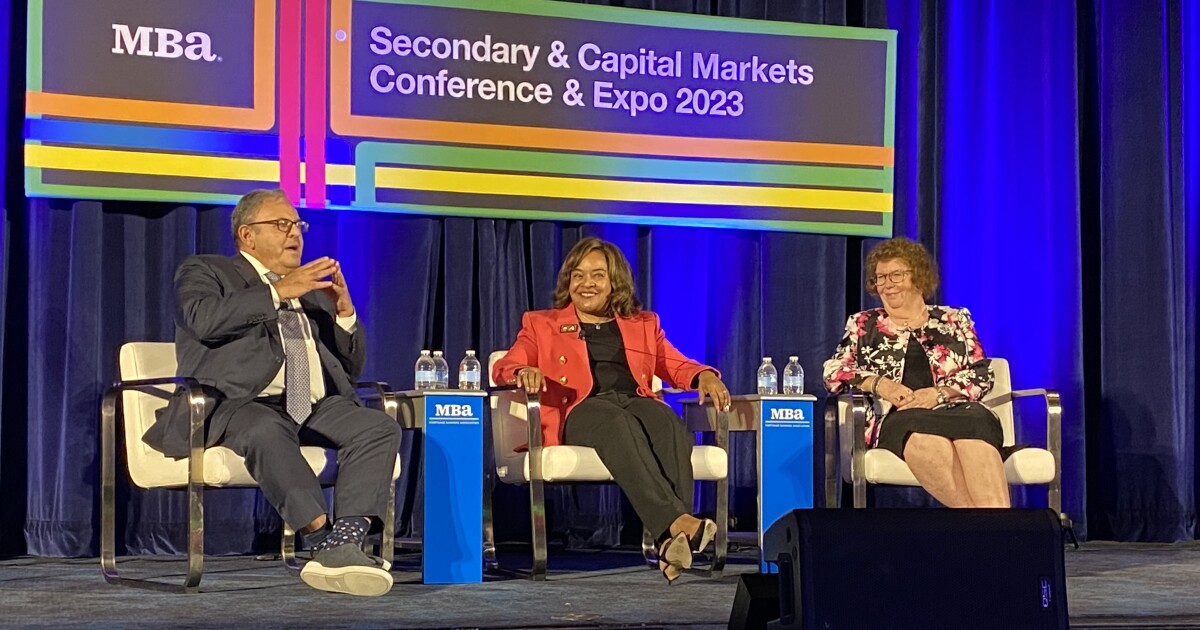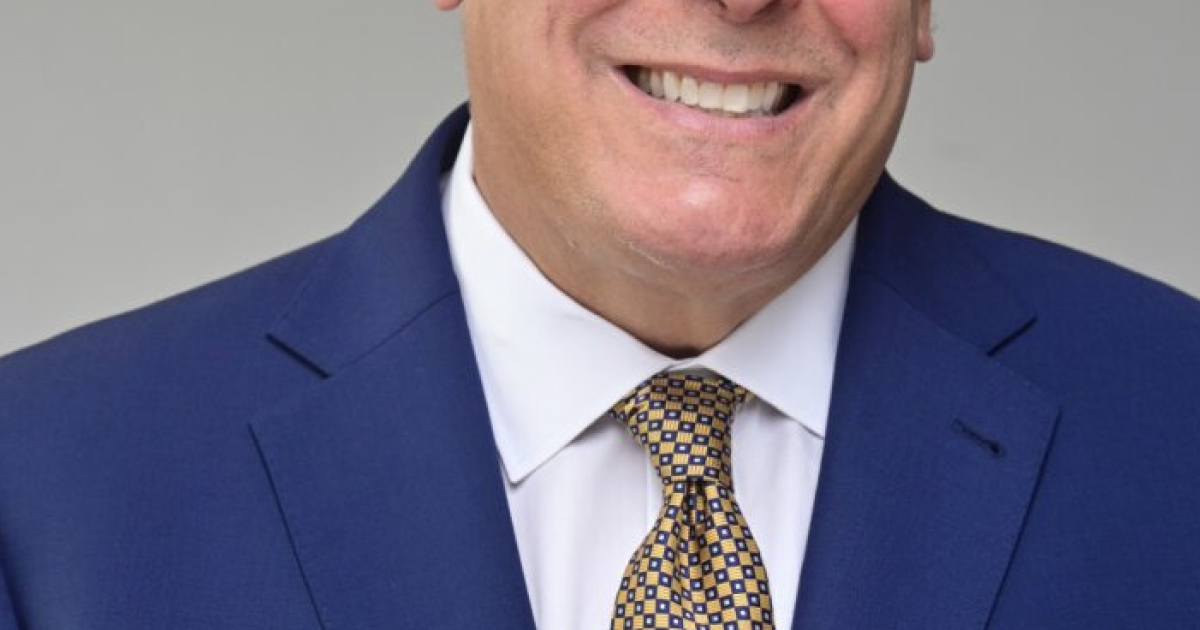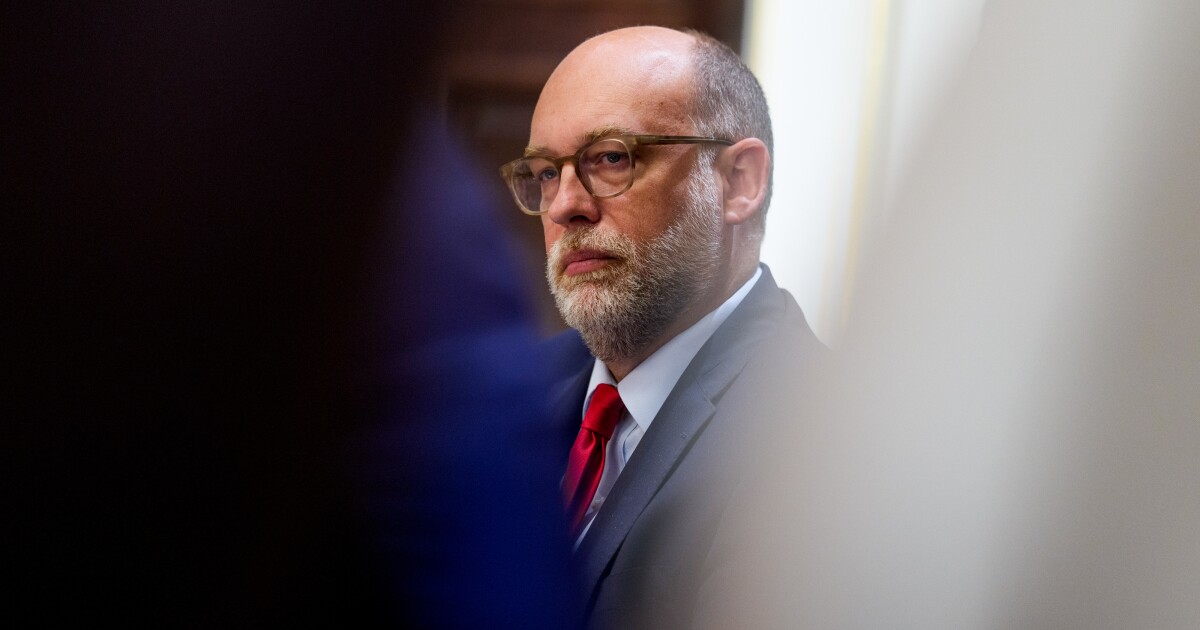
The Federal Home Loan Banks have provided immense capital for financial institutions following recent banking turmoil, liquidity that ailing nonbank lenders can't access.
Only an act of Congress can open the FHLBs to independent mortgage banks, leaders of two of the regional depositories emphasized Monday at the Mortgage Bankers Association Secondary & Capital Markets Conference. Even if the 11-bank system were to accommodate IMBs, the terms wouldn't be very favorable.
Kristina Williams, president and CEO of the Federal Home Loan Bank of Des Moines, addressed the hypothetical scenario in which mortgage servicing rights would be considered acceptable collateral for the banks to grant IMBs membership.
"The volatility of mortgage servicing rights is quite high," she said. "You might not like the haircut we got out of it, because we would have to try to collect that volatility and take that as a haircut to make sure that we can get out of it. Again, protecting our security interest."
Williams and President and CEO of Federal Home Loan Bank of San Francisco, Teresa Bazemore, addressed questions from Freedom Mortgage founder and CEO Stanley Middleman, who lightheartedly pressed the pair on why IMBs were being "blacklisted." The MBA has previously rallied for nonbank inclusion because they have long surpassed depositories as the nation's most active home loan providers. The FHLBs' existing members include commercial banks, credit unions and community development financial institutions.
Middleman suggested the system could be a warehouse lender to the nonbank ecosystem, an idea the bank presidents didn't fully embrace.
"I think that if mortgage banks were to become members, and we were doing more of a warehouse lending-type of situation, we'd have to think operationally about how we would be able to support that," said Bazemore. "Because while there is some movement of collateral, it's not probably at the same velocity that we would see if we were talking about other members."
The system, established by Congress in 1932 during the Great Depression, has over $1 trillion in assets and has become a source of liquidity in times of market duress. The bank network, which once included real estate investment trusts, is owned by its over 6,500 members. Most of its collateral is also real estate-related, and the bank applies haircuts on top of the fair value of the collateral.
The banks have come under scrutiny in the past six months by regulators and lawmakers for being an "easy-money alternative" to the Federal Reserve for struggling banks, rather than the housing finance backer it was meant to be. The FHLBs gave a combined $30.6 billion to a trio of banks that have since failed, and have lent nearly a half-trillion dollars into the industry since the beginning of the year. Critics also point to the bank's lesser-utilized Affordable Housing Program, which gave what amounted to a fraction of debt it lent to depositories to affordable housing efforts.
Williams and Bazemore didn't provide extended commentary when Middleman asked about the banks' recent, hefty depository lending.
Bazemore acknowledged the spike in borrowing during a time of crisis, but disputed the notion that FHLB members only borrow when under duress. About 50% of FHLB members are borrowing from the system at any time, she said. Rather, Bazemore said the system going forward must factor in how fast the market can move.
"What does social media mean in terms of how people sort of now, learn things and do things much more quickly than they have in the past?" she said.
The FHFA wrapped up a series of public roundtables about the FHLB system in March, and has yet to release its Annual Report to Congress on the banks, which typically is published in mid-June.



